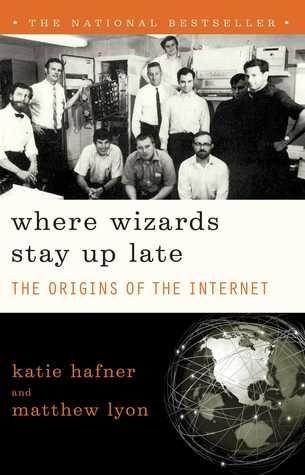
Where Wizards Stay Up Late: The Origins of the Internet
by
Katie Hafner
and
Matthew Lyon
Published 1 Jan 1996
The description of Licklider’s introduction to computers is based on personal interviews with Wes Clark and Jack Ruina, and on Licklider’s interview with the Charles Babbage Institute, as well as the Barber Associates report. Chapter Two The description of Paul Baran’s work on distributed communications is based on personal interviews with Baran, as well as various interviews conducted by the Babbage Institute. The description of Donald Davies’s early work on packet-switching is based on interviews and correspondence with Donald Davies, and on Martin Campbell-Kelly’s articles and interviews. Arthur Norberg and Judy O’Neill’s awesome report, “A History of the Information Processing Techniques Office of the Defense Advanced Research Projects Agency” also guided us through biographical material and through the early years of IPTO.
…
Evolution in science, as in nature—normally a gradual sequence of changes—occasionally makes a revolutionary leap breaking with the course of development. New ideas emerge simultaneously but independently. And so they did when the time was ripe for inventing a new way of transmitting information. In the early 1960s, before Larry Roberts had even set to work creating a new computer network, two other researchers, Paul Baran and Donald Davies—completely unknown to each other and working continents apart toward different goals—arrived at virtually the same revolutionary idea for a new kind of communications network. The realization of their concepts came to be known as packet-switching. Paul Baran was a good-humored immigrant from Eastern Europe.
…
As the meeting was breaking up, a man from the audience approached Davies and said that he was from the Ministry of Defence. He told Davies about some remarkably similar work that had been circulated in the American defense community by a man named Paul Baran. Davies had never heard of Baran or his RAND studies. Donald Davies was the son of working-class parents. His father, a clerk at a coal mine in Wales, died the year after Donald and his twin sister were born. Their mother moved her young family to Portsmouth, a British naval port, where she went to work as a counter clerk in the post office. Donald experimented with radio at a young age and took an early interest in physics.

The Innovators: How a Group of Inventors, Hackers, Geniuses and Geeks Created the Digital Revolution
by
Walter Isaacson
Published 6 Oct 2014
That is when a young engineer from England, Roger Scantlebury, got up to present a paper describing the research of his boss, Donald Davies of Britain’s National Physical Laboratory. It provided an answer: a method of breaking messages into small units that Davies had dubbed “packets.” Scantlebury added that the idea had been developed independently by a researcher named Paul Baran at RAND. After the talk, Larry Roberts and others gathered around Scantlebury to learn more, then moved on to the bar to discuss it late into the night. PACKET SWITCHING: PAUL BARAN, DONALD DAVIES, AND LEONARD KLEINROCK There are many ways of sending data through a network.
…
Paul Baran oral history, “How the Web Was Won,” Vanity Fair, July 2008; interview with Paul Baran, by Stewart Brand, Wired, Mar. 2001; Paul Baran oral history, conducted by David Hochfelder, Oct. 24, 1999, IEEE History Center; Clayton Christensen, The Innovator’s Dilemma (Harper, 1997). 58. Donald Davies, “A Historical Study of the Beginnings of Packet Switching,” Computer Journal, British Computer Society, 2001; Abbate, Inventing the Internet, 558; author’s interview with Larry Roberts; Trevor Harris, “Who Is the Father of the Internet? The Case for Donald Davies,” http://www.academia.edu. 59. Author’s interview with Leonard Kleinrock; Leonard Kleinrock oral history, conducted by John Vardalas, IEEE History Center, Feb. 21, 2004. 60.
…
Engelbart and Bill English invent the mouse. 1972 1964 Ken Kesey and the Merry Pranksters take bus trip across America. 1965 Ted Nelson publishes first article about “hypertext.” Moore’s Law predicts microchips will double in power each year or so. 1966 Stewart Brand hosts Trips Festival with Ken Kesey. Bob Taylor convinces ARPA chief Charles Herzfeld to fund ARPANET. Donald Davies coins the term packet switching. 1967 ARPANET design discussions in Ann Arbor and Gatlinburg. 1968 Larry Roberts sends out request for bids to build the ARPANET’s IMPs. Noyce and Moore form Intel, hire Andy Grove. Brand publishes first Whole Earth Catalog. Engelbart stages the Mother of All Demos with Brand’s help. 1969 First nodes of ARPANET installed. 1971 Don Hoefler begins column for Electronic News called “Silicon Valley USA.”
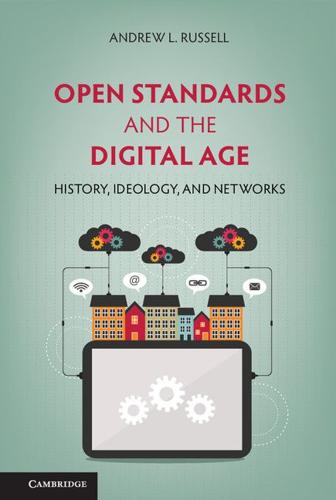
Open Standards and the Digital Age: History, Ideology, and Networks (Cambridge Studies in the Emergence of Global Enterprise)
by
Andrew L. Russell
Published 27 Apr 2014
Zwimpfer, “Standards Setting for Computer Communication: The Case of X.25,” IEEE Communications Magazine 23 (1985): 38. 31 Cerf, INWG 1. 32 Alex Curran and Vinton Cerf, “The Work of IFIP Group 6.1,” ACM SIGCOMM Computer Communication Review 6 (1975): 18–27; Vinton Cerf, “Affiliation of INWG with IFIPS,” April 1973, INWG 24, McKenzie Collection; Vinton Cerf, “INWG Plenary Meeting, June 7 and June 8,” June 7, 1973, INWG 28, McKenzie Collection; James Pelkey, “Entrepreneurial Capitalism and Innovation: A History of Computer Communications, 1968–1988” (2007), http://www.historyofcomputercommunications.info/Book/6/6.0-Overview.html (accessed September 25, 2013). 33 Hubert Zimmermann, interview by James Pelkey, May 25, 1988, courtesy of James Pelkey. 34 Donald Davies, “CCITT Documents – APV No. 21, 22, 23, 24,” December 1972, INWG 11, McKenzie Collection. 35 Rémi Déspres, oral history interview by Valérie Schafer, May 16, 2012, Paris, France. Charles Babbage Institute, University of Minnesota, Minneapolis. 36 Vinton G. Cerf and Robert E. Kahn, “A Protocol for Packet Network Intercommunication,” IEEE Transactions on Communications Com-22 (1974): 637–648. 37 Dave McLimont, “A CCITT Thinkpiece,” January 15, 1974, INWG 45, McKenzie Collection; Donald Davies, “CCITT Contribution by IFIP WG6.1,” August 1974, INWG 69, McKenzie Collection. 38 Vint Cerf, “INWG Meeting in Stockholm, August 10–11, 1974,” April 1, 1974, INWG 53, McKenzie Collection. 39 Cerf, INWG 53; Vint Cerf, “Minutes of the Stockholm Meeting of IFIP WG6.1, August 10–11, 1974 (Aboard the good ship BORE I),” December 20, 1974, INWG 73, McKenzie Collection. 40 Franklin F.
…
Since every major computer manufacturer was following a proprietary strategy designed to prevent connections between dissimilar systems, the Arpanet represented a government-funded project that sought to compensate for this evident market failure.14 The most distinctive attribute of the Arpanet was its reliance on packet-switching, a new method of transmitting data across telephone lines that had been invented independently in the mid-1960s by Paul Baran at RAND Corporation and Donald Davies at Britain’s National Physical Laboratory (NPL). Where traditional circuit-switched telephone networks required a direct, dedicated connection between users, packet-switched networks broke data into discrete blocks, which Davies dubbed “packets,” that contained basic information about their places of origin and destination.
…
It was a resounding success – even if utterly baffling to the ten AT&T executives who attended and reportedly declined ARPA’s offer to operate the Arpanet or even purchase it outright.24 The meeting in Washington did more than host the Arpanet’s coming-out party; it also provided an ideal opportunity to invigorate international cooperation. A growing number of networking experiments outside the United States had already begun to take shape, including two significant projects in France and Great Britain. Louis Pouzin, the computer scientist working for IRIA, was designing a packet-switched network called Cyclades; Donald Davies, the computer scientist at Great Britain’s NPL, had begun his packet-switching experiments in the mid-1960s. Additionally, several PTT national monopolies in Europe were evaluating packet-switching technology, and the European Common Market had asked Derek Barber from Britain’s NPL to direct the creation of a European Informatics Network.

Protocol: how control exists after decentralization
by
Alexander R. Galloway
Published 1 Apr 2004
Baran tells us that these memoranda “were primarily written on airplanes in the 1960 to 1962 era.” See Paul Baran, Electrical Engineer, an oral history conducted in 1999 by David Hochfelder, IEEE History Center, Rutgers University, New Brunswick, NJ, USA. 7. A term coined instead by British scientist Donald Davies who, unknowing of Baran’s work, also invented a system for sending small packets of information over a distributed network. Both scientists are credited with the discovery; however, because of Baran’s proximity to the newly emerging ARPA network, which would be the first to use Baran’s ideas, Davies’s historical influence has diminished.
…
It is a vision that provides us with new freedom, and allows us to grow faster than we ever could when we were fettered by the hierarchical classification systems into which we bound ourselves. . . . And it brings the workings of society closer to the workings of our minds.” See Berners-Lee, Weaving the Web (New York: HarperCollins, 1999), pp. 1–2. Berners-Lee’s historical acumen should not be overstated, however, as he elsewhere misspells the names of both Donald Davies and Paul Baran, the two co-inventors of packetswitching (p. 6). But, alas, “academic quality” is a “subjective notion,” he reminds readers (p. 125). 17. Pierre Lévy, Becoming Virtual: Reality in the Digital Age (New York: Plenum, 1998), p. 16. Chapter 2 60 Machiko Kusahara—“Our culture is undergoing a truly drastic change in terms of our physical and psychological relationship with space and other bodies.”18 Maurizio Lazzarato—“Not, perhaps, since the printing press’s invention has European culture experienced so much upheaval.

The Internet Is Not the Answer
by
Andrew Keen
Published 5 Jan 2015
Rather than sending a single message, Baran’s new system broke up this content into many digital pieces, flooding the network with what he called “message blocks,” which would travel arbitrarily across its many nodes and be reassembled by the receiving computer into readable form. Coined as “packet switching” by Donald Davies, a government-funded information scientist at Britain’s National Physical Laboratory, who had serendipitously been working on a remarkably similar set of ideas, the technology was driven by a process Baran called “hot potato routing,” which rapidly sent packets of information from node to node, guaranteeing the security of the message from spies.
…
There would be a single global information space.44 In 1984, when Berners-Lee returned to CERN and discovered the Internet, he also returned to his larger vision of a single global information space. By this time, he’d discovered the work of Vannevar Bush and Ted Nelson and become familiar with what he called “the advances” of technology giants like Donald Davies, Paul Baran, Bob Kahn, and Vint Cerf. “I happened to come along with time, and the right interest and inclination, after hypertext and the Internet had come of age,” Berners-Lee modestly acknowledged. “The task left to me was to marry them together.”45 The fruit of that marriage was the World Wide Web, the information management system so integral to the Internet that many people think that the Web actually is the Internet.

The Open Revolution: New Rules for a New World
by
Rufus Pollock
Published 29 May 2018
How could the internet be so different? Much of the credit must go to the fact of government funding. The beginnings of the internet were almost entirely paid for by government research funds in the US and to a much smaller extent in the UK (where work at the National Physical Laboratory under Donald Davies was crucial to the development of packet-switching). Even more important was the form of the government funding. Today, ARPA is a legend of what is possible for a public agency. It was staffed by outsiders and free to make bold bets with a minimum of bureaucracy. Funding from ARPA helped to create not only the internet but other aspects of digital life that we now take for granted, from user interfaces to the mouse.

How Not to Network a Nation: The Uneasy History of the Soviet Internet (Information Policy)
by
Benjamin Peters
Published 2 Jun 2016
The Internet, in this sense at least, traces its intellectual sources back to cold war cybernetics. Baran’s network innovations do not arrive without serious institutional and international complication. Although technically on target, Baran’s ideas were not influential until after a foreigner—an Englishman named Donald Davies, with the UK Post backing him—independently discovered and articulated packet switching. Only then did Baran’s superiors in the U.S. military-industrial complex start paying attention to his ideas. In fact, between 1960 and 1966, AT&T repeatedly declined or delayed his proposals to develop digital communication networks.
…
International communication networks also helped to jumpstart and also consign to limbo local computer network projects. This account highlights three case studies: first, Anatoly Kitov’s discovery of Norbert Wiener’s Cybernetics in a secret military library set into motion an internal transition in Soviet scientific discourse; second, Donald Davies and the British Telecom industry prompted the U.S. government to revisit Paul Baran’s RAND research on distributed packet-switching networks; and third, news of the ARPANET going online in 1969 prompted the Politburo to revisit the decade-old OGAS proposal in 1970. In each case, international communication networks (even when they were closed or secret) initially prompted internal institutions to revisit concurrent innovations closer to home.
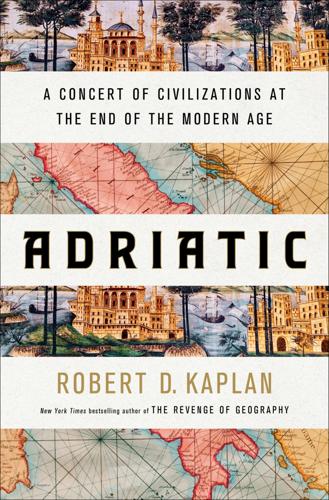
Adriatic: A Concert of Civilizations at the End of the Modern Age
by
Robert D. Kaplan
Published 11 Apr 2022
I ask myself. Where does it begin and end? And what will it become? * * * — The questions are becoming clear now. Rimini has started me on an inner journey whose terminus I cannot yet foresee. Skip Notes *1 Stokes’s book is in style and themes replete with Poundian spirit. Donald Davie, Ezra Pound: Poet as Sculptor (Oxford: Oxford University Press, [1964] 1968), pp. 127–31 and 155–56. *2 Some chroniclers believed that it was only the threat from Persia against the Ottoman Empire that saved Europe from the Ottomans. Bernard Lewis, What Went Wrong? The Clash Between Islam and Modernity in the Middle East (New York: Oxford University Press, 2002), p. 9
…
Humphrey Carpenter, A Serious Character: The Life of Ezra Pound (Boston: Houghton Mifflin, 1988), pp. 418–20. Bernard Berenson, “The Venetian Painters of the Renaissance,” 1894, in Italian Painters of the Renaissance, vol. 1, Venetian and North Italian Schools, and vol. 2, Florentine and Central Italian Schools (London: Phaidon, [Preface 1952], 1968). Moody, Ezra Pound: Poet, pp. 42 and 44. Donald Davie, Ezra Pound: Poet as Sculptor (Oxford: Oxford University Press, [1964] 1968), pp. 85 and 126. BACK TO NOTE REFERENCE 4 Carpenter, A Serious Character, pp. 418, 420, 225–26, 258–59, and 318. Charles Boer, Charles Olson in Connecticut (Rocky Mount: North Carolina Wesleyan College Press, 1975), p. 78.

The Future of Ideas: The Fate of the Commons in a Connected World
by
Lawrence Lessig
Published 14 Jul 2001
As long as they flowed fast enough, and the computers at both ends were quick, the conversation encoded in this packet form would seem just like a conversation along a single virtual wire across the ocean. Baran was probably not the first person to come up with this idea—MIT loyalists insist that that was Leonard Kleinrock.20 And he was also not the only person working on the idea in the early 1960s. Independently, in England, Donald Davies was developing something very similar.21 But whether the first, or the only, doesn't really matter for our purposes here. What is important is that Baran outlined a telecommunications system fundamentally different from the dominant design, and that different telecommunications system would have effected a radically different evolution of telecommunications.
…
See also John Naughton, A Brief History of the Future: The Origins of the Internet (London: Weidenfeld & Nicolson, 1999), 92, 118-19 (discussing other earlier contributors to the Internet). 21 Baran attributes to him the discovery of the term. Interview with Paul Baran (“The term 'packet switching' was first used by Donald Davies of the National Physical Laboratory in England, who independently came up with the same general concept in November 1965.”). 22 Baran confirmed this history to me in an interview. “So the first level of objections was about technology—that I didn't understand how the telephone system worked, [and] that what I'm proposing could not possibly work.”
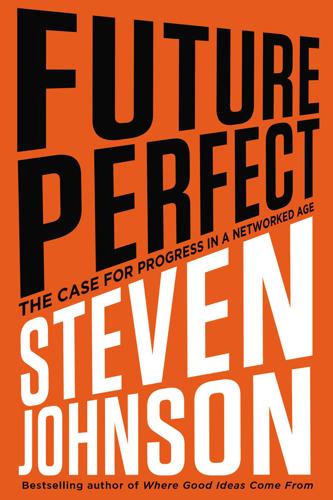
Future Perfect: The Case for Progress in a Networked Age
by
Steven Johnson
Published 14 Jul 2012
This, too, accentuated the resilience of Baran’s architecture; even the messages themselves were mini-networks of data, with each partial message finding its own way across the broader network. Baran called his approach “distributed adaptive message block switching.” A few years later, the Welsh computer scientist Donald Davies hit upon a similar scheme, independent of Baran. He anointed the message fragments with the slightly more Anglo name of “packets,” and the general approach “packet switching.” The metaphors stuck. Today, the vast majority of data circling around the globe comes in the form of message fragments that we still call packets.

Computer: A History of the Information Machine
by
Martin Campbell-Kelly
and
Nathan Ensmenger
Published 29 Jul 2013
Unknown to Roberts, a solution to the first two problems had already been invented. Known as “store-and-forward packet switching,” the idea was first put forward by Paul Baran of the RAND Corporation in 1961 and was independently reinvented in 1965 at the National Physical Laboratory in England by Donald Davies, who coined the term packet switching. Davies recognized the packet-switching concept to be similar to an older telegraph technology. In telegraph networks, engineers had already solved the problem of how to avoid having every city connected to every other. Connectivity was achieved by using a number of switching centers located in major cities.
…
In effect, by enabling many users to share a communications line simultaneously, packet switching did for telecommunications what time-sharing had done for computing. All of this was unknown to Roberts until he attended an international meeting of computer network researchers in Gatlinburg, Tennessee, in October 1967. There he learned of the packet-switching concept from one of Donald Davies’s English colleagues. He later described this as a kind of revelation: “Suddenly I learned how to route packets.” The final problem that remained for Roberts was how to avoid the horrendous software problems of getting the different computers to handle the network traffic. Fortunately, just as Roberts was confronting this problem, the first minicomputers had started to enter the market and the solution came to him in a eureka moment in a taxicab ride: the interface message processor (IMP).

Economics Rules: The Rights and Wrongs of the Dismal Science
by
Dani Rodrik
Published 12 Oct 2015
To avoid the problem that men who choose to join the army may be inherently different from those who do not, Angrist used the Vietnam War–era draft lottery, which had created random recruitment. He found that men who had served in the early 1970s ended up earning about 15 percent less a decade later than men who had never served.15 Columbia University economists Donald Davis and David Weinstein used the US bombing of Japanese cities during the Second World War to test two models of city growth. One model was based on scale economies (decline in production costs as urban density increased), and the other was based on locational advantages (such as access to a natural seaport).
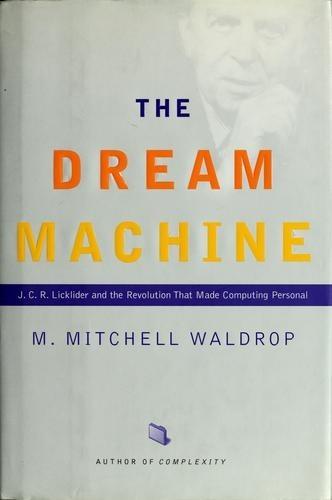
The Dream Machine: J.C.R. Licklider and the Revolution That Made Computing Personal
by
M. Mitchell Waldrop
Published 14 Apr 2001
Except that shortly thereafter, an Englishman named Roger Scantlebury got up to give a paper on a system being developed by Donald Davies's telecommu- nications research group at the National Physical Laboratory (NPL) in Tedding- ton, outside London-and proceeded to describe essentially the same idea: packets, IMPs, distributed control, the works. What the. . . ? The story, as Scantlebury would explain it to the disconcerted Roberts later that day, was both ironic and sad. The irony was that Donald Davies had got- ten his original inspiration when he was hosting a conference on time-sharing back in late 1965 and fell into an impromptu discussion about networking with J.
…
That wasn't a category that included much on IPTO's agenda-not Project MAC, not Engelbart's center, and certainly not the network. With the technical design for the network still in draft form at that point, the entire effort could eas- ily have been stopped right there, leaving Larry Roberts just as thoroughly stymied by the bureaucracy as Donald Davies and Paul Baran had been before him. And yet somehow it didn't happen. ARPA's computing program continued to lead its charmed life, rather like a person sleepwalking through a battlefield without getting a scratch. One reason was DDR&E Johnny Foster, who resisted any and all attempts to focus ARPA's efforts purely on Vietnam.

Under a White Sky: The Nature of the Future
by
Elizabeth Kolbert
Published 15 Mar 2021
A poem commemorating the Corps’ efforts declared: The plan was an engineer masterpiece Fashioned by experts, a grand bas-relief Levees, floodways, and other improvements Blended into a project beneficent. Thanks to the “project beneficent,” the crevasse period came to an end. But with the end of river flooding came an end to fresh sediment. In the succinct formulation of Donald Davis, a geographer at LSU: “The Mississippi River was controlled; land was lost; the environment changed.” CPRA’s “bold” scheme for saving Plaquemines is to rehabilitate the crevasse for a post-crevasse age. The agency’s master plan calls for punching eight giant holes through the levees on the Mississippi and two more through those on its main distributary, the Atchafalaya.

Economic Gangsters: Corruption, Violence, and the Poverty of Nations
by
Raymond Fisman
and
Edward Miguel
Published 14 Apr 2008
But we can reasonably assume that the number of still-active explosives in any given location is very closely related to the quantity of bombs that were dropped there during the war. 4. The U.S. Department of Energy page contains a discussion; see: http://www.cfo.doe.gov/me70/manhattan/hiroshima.htm and http://www.cfo.doe.gov/me70/manhattan/nagasaki.htm (last visited March 29, 2008). 5. Donald Davis and David Weinstein (2002). “Bones, Bombs, and Breakpoints: The Geography of Economic Activity,” American Economic Review, 92(5). 6. Districts are administrative units similar to U.S. counties; a district typically contains several hundred villages. 7. For the curious reader, this result didn’t change in the analysis when we measured bombing intensity in different ways, looked at larger administrative units (provinces instead of districts), and used statistical “control” variables, like prewar population density and geographic factors; see Miguel and Roland (2006), “The Long Run Impact of Bombing Vietnam”, NBER Working Paper #11954, for the details. 8.
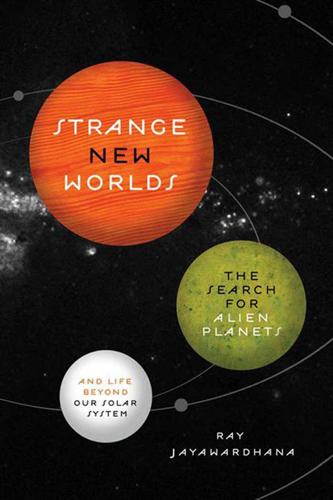
Strange New Worlds: The Search for Alien Planets and Life Beyond Our Solar System
by
Ray Jayawardhana
Published 3 Feb 2011
Theoretical calculations show that capture into orbit is highly unlikely: if a Moon-size body were to come near the Earth, it’s a lot more likely to have either hit the Earth directly or received a gravity kick that set it fying off into space. In the early 1970s, two sets of theorists—one consisting of Alistair Cameron and William Ward at Harvard and the other of William Hartmann and Donald Davis of the Planetary Science Institute in Tucson— independently suggested that the Moon formed from the debris of a giant impact that the Earth had with a Mars-size roaming planet. But it took nearly a decade before planetary scientists widely accepted that catastrophic impacts had been common in the early solar system.
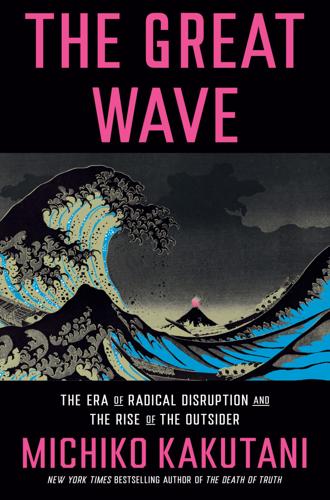
The Great Wave: The Era of Radical Disruption and the Rise of the Outsider
by
Michiko Kakutani
Published 20 Feb 2024
Paul Baran, a Polish-born engineer at the RAND Corporation, proposed a solution: Whereas centralized systems (shaped like a star) were susceptible to being taken out by one strategically placed hit, he argued, a “distributed” system (shaped like a grid with many nodes that created redundancy) had much better chances of surviving—even if several nodes were knocked out, at least a portion of the network would continue to function. Baran’s work—along with that of the British computer scientist Donald Davies—would lead to the development of “packet switching” (a secure method of splitting and sending data that is reassembled at its destination), which, in the late 1960s, would become a basis for sending messages between computers and the development of the ARPANET, which connected academic, military, and research institutions and would eventually evolve into the internet.

Tubes: A Journey to the Center of the Internet
by
Andrew Blum
Published 28 May 2012
In 1961, while a graduate student at MIT, he published the first paper on “packet switching,” the idea that data could be transmitted efficiently in small chunks rather than a continuous stream—one of the key notions behind the Internet. The idea was already in the air. A professor at the British National Physical Laboratory named Donald Davies had, unbeknownst to Kleinrock, been independently refining similar concepts, as had Paul Baran, a researcher at the RAND Corporation in Los Angeles. Baran’s work, begun in 1960 at the request of the US Air Force, was explicitly aimed at designing a network that could survive a nuclear attack. Davies, working in an academic setting, merely wanted to improve England’s communications system.

Applied Cryptography: Protocols, Algorithms, and Source Code in C
by
Bruce Schneier
Published 10 Nov 1993
Mallory intercepts the message, decrypts PB with his private key, re-encrypts it with Alice’s public key, and sends it on to her. (4) Alice decrypts PB and verifies that it is correct. (5) Bob decrypts PA and verifies that it is correct. Alice and Bob see nothing different. However, Mallory knows both PA and PB. Donald Davies and Wyn Price describe how the interlock protocol (described in Section 3.1) can defeat this attack [435]. Steve Bellovin and Michael Merritt discuss ways to attack this protocol [110]. If Alice is a user and Bob is a host, Mallory can pretend to be Bob, complete the beginning steps of the protocol with Alice, and then drop the connection.
…
Other researchers showed that publicly known design principles could be used to generate S-boxes with the observed characteristics [266]. Additional Results There were other attempts to cryptanalyze DES. One cryptographer looked at nonrandomness based on spectral tests [559]. Others analyzed sequences of linear factors, but their attack failed after eight rounds [1297,336,531]. A 1987 unpublished attack by Donald Davies exploited the way the expansion permutation repeats bits into adjacent S-boxes; this attack is also impractical after eight rounds [172,429]. 12.4 Differential and Linear Cryptanalysis Differential Cryptanalysis In 1990, Eli Biham and Adi Shamir introduced differential cryptanalysis [167,168,171,172].
…
The most important keys, those used to generate the actual encryption keys, are stored in this module. These keys can never be read once they are stored. And they are tagged by use: A key dedicated for one purpose cannot accidentally be used for another. This concept of key control vectors is probably the most significant contribution of this system. Donald Davies and William Price discuss this key management protocol in detail [435]. A Variation A variation on this scheme of master and session keys can be found in [1478]. It’s built around network nodes with key notarization facilities that serve local terminals. It is designed to: — Secure two-way communication between any two terminal users. — Secure communications using encrypted mail. — Provide personal file protection. — Provide a digital signature capability.
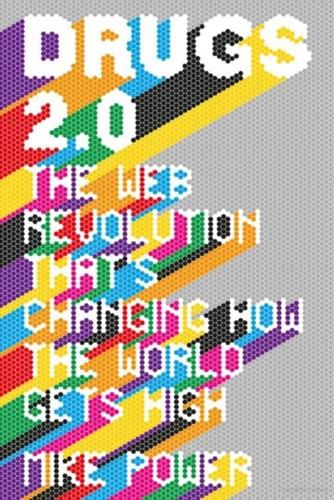
Drugs 2.0: The Web Revolution That's Changing How the World Gets High
by
Mike Power
Published 1 May 2013
The acronymic utopias enabled by internet technologies such as TCP/IP aren’t so different from those offered by LSD: equality, connectedness, awareness of life as a sum greater than its parts. In the early 1960s, American computer scientist Leonard Kleinrock of the Massachusetts Institute of Technology and Paul Baran of the Rand Corporation, and, later, Britain’s Donald Davies, a physician at the UK’s National Physical Library in Teddington, independently conceived of the same way to send data around a telephone network efficiently by splitting it into chunks and routing it through nodes around the network to later arrive, reassembled, in the right place. These deliberate first steps towards cyberspace had a greater impact on the history of mankind than the simple stroll on a rock high above our heads two years later.
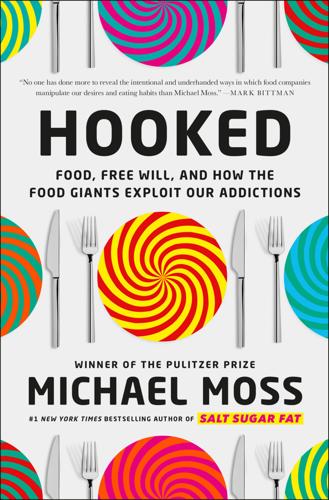
Hooked: Food, Free Will, and How the Food Giants Exploit Our Addictions
by
Michael Moss
Published 2 Mar 2021
deal with this ruse “Guidance for Industry: Scientific Evaluation of the Evidence on the Beneficial Physiological Effects of Isolated or Synthetic Non-Digestible Carbohydrates Submitted as a Citizen Petition” (21 CFR 10.30), docket no. FDA-2016-DF-3401, FDA, February 2018. wrote for the journal Roger Williams, “Concept of Genetotrophic Disease,” Nutrition Reviews 8 (1950): 257–60. See also Donald Davis et al., “Roger J. Williams, 1893–1988,” National Academy of Sciences, 2008. Some of the people Bruno Estour et al., “Constitutional Thinness and Anorexia Nervosa: A Possible Misdiagnosis?” Frontiers in Endocrinology 5 (2014); Bruno Estour to author. Not only did they fail N. Germain et al., “Specific Appetite, Energetic and Metabolomics Responses to Fat Overfeeding in Resistant-to-Bodyweight-Gain Constitutional Thinness,” Nutrition and Diabetes 4 (2014): 1-8.
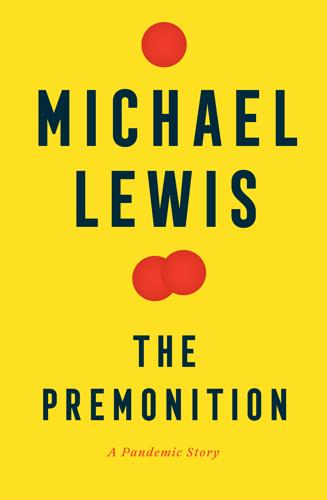
The Premonition: A Pandemic Story
by
Michael Lewis
Published 3 May 2021
His first pick was Richard Hatchett, another doctor who had stopped treating patients and moved into government service. Richard belonged to a dying species: the romantic southern man of letters who travels north and there makes an uneasy home for himself. He’d grown up in Daphne, Alabama, and in 1985 had gone off to Vanderbilt University, where his poetry caught the eye of the eminent poets in residence Donald Davie and Mark Jarman. They’d picked him to represent Vanderbilt at a national collegiate poetry competition, in which he finished second. A judge, the future Pulitzer Prize–winning Irish poet Paul Muldoon, singled out one of his poems as the work of a young poet of promise. When asked why, instead of pursuing a career as a poet, he had gone to medical school, Richard would say simply, “Writing is too hard.”
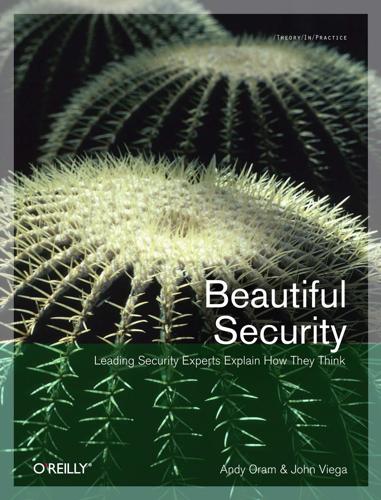
Beautiful security
by
Andy Oram
and
John Viega
Published 15 Dec 2009
Many historians attribute the victory in the Second World War directly to the code breakers at Bletchley Park who deciphered the famous Enigma machine, yet even this monumental technological event, which ended the World War and changed history forever, may pale into insignificance next to changes to come. The packet switching network invented by Donald Davies in 1970 also changed the world forever when the sudden ability of computers to talk to other computers with which they previously had no relationship opened up new possibilities for previously isolated computing power. Although the early telegraph networks almost a century before may have aroused the dream of an electronically connected planet, it was only in the 1970s, 1980s, and 1990s that we started to wire the world together definitively with copper cables and later with fiber-optic technology.

Darwin Among the Machines
by
George Dyson
Published 28 Mar 2012
“In a very short period of time—within the past decade, the research effort devoted to these ends has developed from analyses of how a mechanical mouse might find his way out of a maze, to suggestions of the design of an all-electronic world-wide communications system,” he wrote in 1964.54 Baran christened his technique “adaptive message block switching,” abbreviated to “packet switching” in 1966 by Donald Davies, working independently at the U.K. National Physical Laboratory. The first order of business was to take all forms of communicable information—text, data, graphics, voice—and break it up into short strings of bits of uniform length. To the network, all forms of communication would look the same.
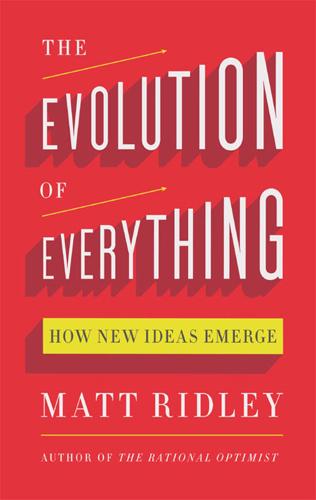
The Evolution of Everything: How New Ideas Emerge
by
Matt Ridley
Given all we know about the ubiquitous phenomenon of simultaneous invention, and the inevitability of the next step in innovation once a technology is ripe (see Chapter 7), it is inconceivable that the twentieth century would have ended without a general, open means of connecting computers to each other so that people could see what was on other nodes than their own hard drive. Indeed, the notion of packet switching – and even the name we now use for it – occurred independently to a Welshman named Donald Davies just a short time after Baran stumbled on it. Vint Cerf shares the credit for TCP/IP with Bob Kahn. So, while we should honour individuals for their contributions, we should not really think that they made something come into existence that would not have otherwise. The names would be different, and some of the procedures too, but an alternative internet would exist today whoever had lived.
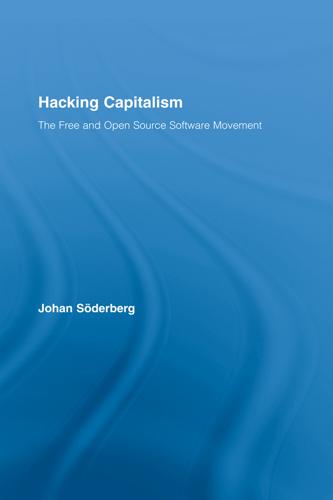
Hacking Capitalism
by
Söderberg, Johan; Söderberg, Johan;
Chant, Sources for the Study of Science, Technology and Everyday Life 1870–1950—A Secondary Reader (London: Hodder & Stoughton, 1988). 3. For a detailed summary of the background history of the Internet, see John Naughton, A Brief History of the Future—The Origins of the Internet (London: Phoenix, 2000). 4. Note that this is not the Marxist writer Paul Baran. 5. Less known is Donald Davies, a British scientist who also worked on a digital communication network and even got a prototype up and running. Janet Abbate, “Cold War and White Heat: The Origins and Meanings of Packet Switching” in ed. Donald MacKenzie and Judy Wajcman, The Social Shaping of Technology, 2nd edition (Buckingham: Philadelphia, Pa: Open University Press 1999). 6.

The Invisible Web: Uncovering Information Sources Search Engines Can't See
by
Gary Price
,
Chris Sherman
and
Danny Sullivan
Published 2 Jan 2003
Justquotes.com is a great example of a site that serves both as a useful pathfinder to specific (namely investing) Invisible Web resources, but that saves the time of the researcher by pre-configuring what amounts to custom searches with the stock symbol of interest to the searcher. To paraphrase the popular television commercial, “No search engine gonna do all that.” Case 8 – The Invisible Web Fails to Deliver! Donald Davis feels very familiar and comfortable with the visible and Invisible Web. He has read numerous articles on the subject and knows his way around many of the better Invisible Web pathfinders. In fact, he recently accessed some key economic statistics via the Invisible Web. Donald is trying to track down several newspaper articles for a business proposal he is writing and feels confident that his knowledge of the Invisible Web will come in very handy.
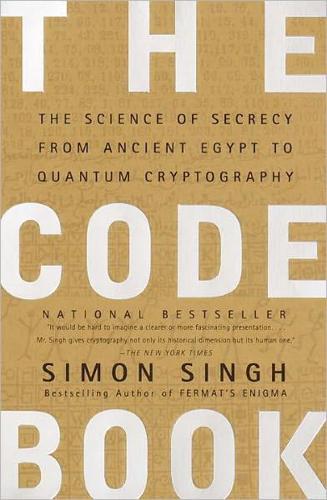
The Code Book: The Science of Secrecy From Ancient Egypt to Quantum Cryptography
by
Simon Singh
Published 1 Jan 1999
I am also grateful to David Deutsch and Michele Mosca of the Oxford Centre for Quantum Computation, Charles Bennett and his research group at IBM’s Thomas J. Watson Laboratories, Stephen Wiesner, Leonard Adleman, Ronald Rivest, Paul Rothemund, Jim Gillogly, Paul Leyland and Neil Barrett. Derek Taunt, Alan Stripp and Donald Davies kindly explained to me how Bletchley Park broke Enigma, and I was also helped by the Bletchley Park Trust, whose members regularly give enlightening lectures on a variety of topics. Dr. Mohammed Mrayati and Dr. Ibrahim Kadi have been involved in revealing some of the early breakthroughs in Arab cryptanalysis, and were kind enough to send me relevant documents.
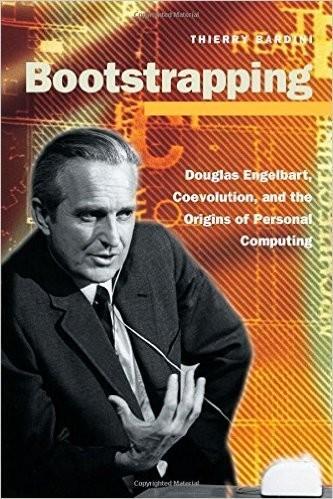
Bootstrapping: Douglas Engelbart, Coevolution, and the Origins of Personal Computing (Writing Science)
by
Thierry Bardini
Published 1 Dec 2000
Paul Baran invented the technique for telephony at RAND, and the term "packet" was used for the first time in connection with computer networks by Davies In 1966. Baran et al. (1964), Roberts (1988,144). 5. Roberts reported that "some of the [RAND] reports were classified as not In the public domaIn. Therefore, neither Donald Davies nor I had seen anything of the work until we were deep into the design of our respective systems. The RAND work was very detailed. . . . Their hot-potato routing algorIthm was a useful starting point for the ARPANET routIng design" (19 88 , 147). 6. Norberg and O'Neill report that Roberts thought at first that "a committee cannot be expected to investigate and solve the more difficult, longer range problems, 25 8 Notes to Chapter 7 particularly when the best solution may requIre considerable efforts for some of the members'1 (1996, 169).

Smart Cities: Big Data, Civic Hackers, and the Quest for a New Utopia
by
Anthony M. Townsend
Published 29 Sep 2013
There were indeed real concerns about the survivability of military communications networks. But RAND was just one of several research groups that were broadly rethinking communications networks at the time—parallel efforts on distributed communications were being led by Lawrence Roberts at MIT and Donald Davies and Roger Scantlebury at the United Kingdom’s National Physical Laboratory. Each of the three efforts remained unaware of each other until a 1967 conference organized by the Association for Computing Machinery in Gatlinburg, Tennessee, where Roberts met Scantlebury, who by then had learned of Baran’s earlier work.17 And ARPANET wasn’t a military command network for America’s nuclear arsenal, or any arsenal for that matter.

Your Computer Is on Fire
by
Thomas S. Mullaney
,
Benjamin Peters
,
Mar Hicks
and
Kavita Philip
Published 9 Mar 2021
(Perhaps the limits of contemporary open-source politics—such as the radical transparency of WikiLeaks and the private cipher that is Julian Assange—follow the limits of Cold War mutual intelligibility.) AT&T, the near analogue to a state network monopoly at the time, also rejected Baran’s proposal to develop digital networks, fearing digital networks would bring them into competition against their own services.32 And so Baran’s research languished until an Englishman named Donald Davies, with the support of the UK post office, independently developed network innovations similar to Baran.33 Only then, in 1966, under the pressure of an outside organization to which the national government felt compelled to respond (an ally nation backed by another hefty state media monopoly), did Baran’s superiors feel pressured to revisit and reclaim his team’s network research for ARPA under J.

WTF?: What's the Future and Why It's Up to Us
by
Tim O'Reilly
Published 9 Oct 2017
But add the idea of fitness functions and a fitness landscape to his insight that simple systems are able to evolve in ways that surprise their creators and you have a powerful tool for seeing and understanding how computer networks and marketplaces work. The Internet itself proves the point. In the 1960s, Paul Baran, Donald Davies, Leonard Kleinrock, and others had developed a theoretical alternative called packet switching to the circuit-switched networks that had characterized the telephone and telegraph. Rather than creating a physical circuit between the two endpoints for the duration of a communication, messages are broken up into small, standardized chunks, shipped by whatever route is most convenient for each packet, and reassembled at their destination.
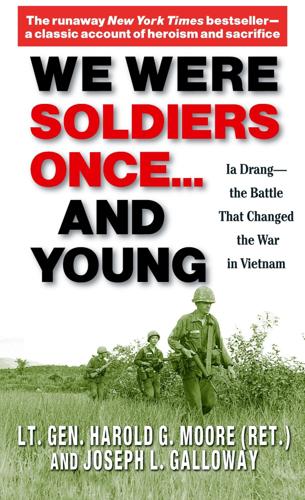
We Were Soldiers Once...and Young: Ia Drang - the Battle That Changed the War in Vietnam
by
Harold G. Moore
and
Joseph L. Galloway
Published 19 Oct 1991
Lieutenants Bill Riddle, the forward observer with John Herren's Bravo Company, and Tim Blake, who was killed with Tony Nadal's Alpha Company, were on loan to us from Barker's Battery C. Also located in Falcon were the six big guns of Battery A, 1st of the 21st Artillery, commanded by Captain Donald Davis, twenty-eight, a native Ohioan. The brave cannon-cockers in LZ Falcon went without sleep for three days and nights to help keep us surrounded by a wall of steel. Those two batteries, twelve guns, fired more than four thousand rounds of high-explosive shells on the first day alone. Says Barker, "On the first afternoon both batteries fired for effect [directly on target] for five straight hours."

Free Speech: Ten Principles for a Connected World
by
Timothy Garton Ash
Published 23 May 2016
It changed its name to Defense Advanced Research Projects Agency (DARPA) in 1971, back to ARPA in 1993, then back to DARPA in 1996. See Internet Society, ‘Brief History of the Internet’, http://perma.cc/SNY8-TYAE 50. David Clark, quoted in Paulina Borsook, ‘How Anarchy Works’, Wired, http://perma.cc/9XXM-PKKX 51. Mueller 2004, 74–75 52. the British scientist was Donald Davies; see Hafner et al. 2006, 67. For TCP/IP see the discussion in Mueller 2004, 5–7 53. this was certainly the case with Paul Baran at the Rand Corporation; see Hafner et al. 2006, 54–64 54. see Zittrain 2008, 31–33, and Wu 2010, 201–2. The cyberlaw expert Tim Wu is credited with coining the term; see Wu 2003.
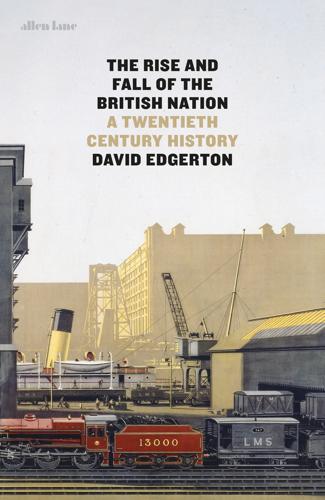
The Rise and Fall of the British Nation: A Twentieth-Century History
by
David Edgerton
Published 27 Jun 2018
It spent around £100,000 on supporting research in universities and £3 milion on development (building and operating pilot plants) and technical service, of which £1 million and 900 workers (300 graduates) were on technical service.57 In fact, the 1960s and 1970s were a moment of creativity in British state and industry in smaller-scale activities away from the glare of state policy and often connected internationally. For example, in the 1960s in the STC (the British subsidiary of ITT) laboratories in Essex Charles K. Kao, born in China, trained in Hong Kong and the United Kingdom, devised the fibre-optic cable, for which he much later won a Nobel Prize. Also in the 1960s Donald Davies of the National Physical Laboratory developed packet-switching, a key element of the internet. Sir Geoffrey Houndsfield of EMI developed the CT-scanner, introduced in the 1970s, and Sir Peter Mansfield of Nottingham University invented MRI imaging, also introduced in the 1970s. Neither had been to Oxford or Cambridge, very unusually for Nobel Prize winners, as they too became.

Engineering Security
by
Peter Gutmann
“Accountable Certificate Management using Undeniable Attestations”, Ahto Buldas, Peeter Land and Helger Lipmaa, Proceedings of the 7th ACM Conference on Computer and Communications Security (CCS 2000), November 2000, p.9. “Security for Computer Networks : An Introduction to Data Security in Teleprocessing and Electronic Funds Transfer”, Donald Davies and W.Price, John Wiley and Sons, 1984. “Beyond Identity: Warranty-Based Digital Signature Transactions”, Yair Frankel, David Kravitz, Charles Montgomery and Moti Yung, Proceedings of the 2nd Financial Cryptography Conference (FC’98), Springer-Verlag LNCS No.1465, February 1998, p.241. “Oasis Digital Signature Services: Digital Signing without the Headaches”, Nick Pope and Juan Carlos Cruellas, IEEE Internet Computing, Vol.10, No.6 (September/October 2006), p.81.